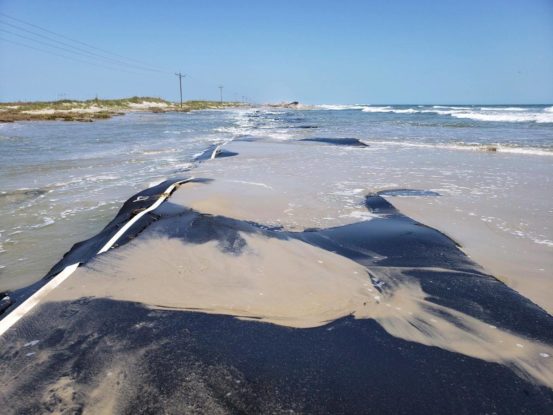Hurricane Dorian Outer Banks Cleanup
To donate to Ocracoke Island and Hatteras relief efforts, visit The Outer Banks Community Foundation Disaster Relief Fund.
Thankfully, in spite of how it is often portrayed in the national media, the fact is, the Outer Banks doesn’t get hit by hurricanes very often. That doesn’t mean we don’t, but they are certainly not annual events and it’s pretty rare for it to be even a bi-annual event.
But they do happen. And they are dreadful experiences. At 85-90 mph the wind is screeching and howling—which will go on for a few hours. It’s almost a sure bet that power will be lost at some point, with the possibility of it being off for 10-12 hours, at times longer.
And then there’s the water. Here’s something that’s really important to know about all Outer Banks homes and buildings: every one of them is designed to withstand at least a 125mph wind. So as miserable as it may seem when the wind is screeching for hours on end, homes are pretty safe places.

Except for the storm surge. And that’s where the real damage can occur.
Although storm surge can be affected by tides, the tide and storm surge are two very separate events. We just had a tragic and horrible example of that on the south end of Hatteras Island and Ocracoke during Hurricane Dorian.
The storm surge that inundated those places came from Pamlico Sound. The Outer Banks sounds have very minimal tidal fluctuations if they have any at all. What caused that catastrophic 7’ sudden surge of water into Ocracoke’s Silver Lake or Hatteras Village was the circulation of the winds around the eye of the storm. When the winds shifted to the northwest, they were forcing water directly into those places.

And when it’s all done, when the skies clear and the storm is well out to sea, that’s when the real difficulty begins. Because the cleanup is in many ways worse than the storm.
The northern Outer Banks got off remarkably easy in Hurricane Dorian. Some siding peeled off walls and roof repairs…but none of that is structural, and it’s all external.
There were also a lot of branches scattered everywhere, some of them pretty big. And some trees did topple over. Some simply ripped up by their roots; others splintered, shards and slivers of wood scattered across sidewalks or roads where they fell.
The Nags Head Causeway leading into Manteo showed some of the most dramatic effects, with every—every—telephone pole carrying power to Manteo snapped like a toothpick. The power company had power back to Manteo within a day and a half..
None of that compares to what happens when storm surge seeps into a home.
When water gets into a home, everything has to go. All the furniture, the appliances, the carpets, and drywall has to be ripped out back to the studs.
It is a difficult sight. The belongings of people’s lives are removed from their homes, and piled for garbage along the side of the road.

And it can sit there for a while.
All local budgets include provisions for storm debris pickup. And paying for it is important, but it is just one part of the puzzle.
Removing that amount of debris and refuse is a herculean task that often takes weeks to complete. There are only so many huge, double trucks to lug it all away. But there is so much of it, and there are only so many places that it can be taken.
Here on the northern Outer Banks, even getting off with as little damage as we had, the last of the cleanup trucks and the final piles of debris, the broken tree limbs, and fallen trees, were not hauled away until this week, three weeks after Dorian left.
The task on the Island of Ocracoke is so much more complex. There is only one way on and off the island—by ferry. Those rules don’t change because Mother Nature battered the island with an unprecedented storm surge.
It’s the worst part of the process. After the winds have gone, and the national coverage with cameras filming the immediate aftermath have gone home, there is still the flotsam of life along the street.
It will be cleaned up, of course. And Ocracoke will be back, that beautiful village perched on the banks of Silver Lake. It’s one of our favorite day trips, and when the ferries are running again for the public, we’ll be able to once again sit by docks on a sunny afternoon with a basket of fried local shrimp and a beverage of some sort.
To donate to Ocracoke Island and Hatteras relief efforts, visit The Outer Banks Community Foundation Disaster Relief Fund.
